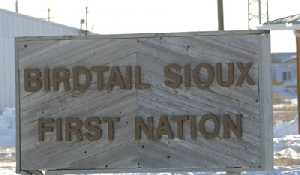After several fatalities on Highway 1 at Moosomin: Review nixes speed zone, lights
October 3, 2012, 6:40 am
Kara Kinna


Last Wednesday, Moosomin town council was informed there will be no lights, and no reduced speed zone along Highway 1 through Moosomin, as the result of a study done by the Ministry of Highways and Infrastructure.
In the wake of numerous accidents at the three Highway 1 intersections through town, council contacted the ministry in the spring asking them to consider a reduced speed zone and traffic lights along the highway through Moosomin. Two highways officials met with council April 20 to listen to their concerns.
Last Wednesday at their meeting, council received the results of an internal safety review conducted by the ministry, along with a number of suggestions for decreasing the number of accidents on the highway.
Those suggestions include median lights at the west and centre accesses, an eastbound right turn lane at the east intersection where the Co-op C-store is located, and additional lighting at that intersection. The review also suggested "important intersection ahead" signage equipped with flashing yellow lights at the east access, along with an oversized stop sign with flashing red lights on the south leg of the east access.
The review soundly rejected the idea of a reduced speed zone and traffic lights.
"To evaluate the posted speed limit at this location, two radar speed studies were conducted. The results of the radar speed studies indicate that 110 km/hr is the appropriate speed limit at this location," read a letter from Brent Miller, Director of Asset Management with Highways.
"It is expected that a speed limit reduction at this location would increase speed differentials and thus the potential for collisions.
"To evaluate the warrants for traffic signals at the three accesses, the Transportation Association of Canada's warrant procedure was utilized. The results of the warrant evaluation indicate that traffic signals are not warranted at any of the three accesses. In addition, it is expected that the installation of traffic signals at these locations would be contrary to driver expectation and could lead to an increase in rear end collision frequency."
The review went on to state that the stop sign at the east access will be upgraded in the near future, while all other improvements will be entered into the Ministry's Safety Improvement Program and ranked in priority along with other projects in the province. However, if the town is willing to cost share 50 per cent of the cost, the improvements will be made sooner.
Mayor Don Bradley commented on the review.
"There have been quite a few accidents out there," he said. "They look like they are going to do something, but it doesn't look like much."
Statistics compiled by the RCMP show that the number of accidents in the Moosomin area jumped significantly after the twinned section of Trans-Canada Highway was opened around the town of Moosomin on Nov. 6, 2008.
The number of accidents recorded by the RCMP for the Moosomin detachment area jumped significantly, from 106 in 2007-the last complete year the highway was not twinned and traffic had to slow down through Moosomin-to 117 in 2008, when the twinned highway was open for two months-to 152 in 2009 and 178 in 2010.
The RCMP data also shows that the number of injuries and fatalities as a result of highway collisions in the Moosomin detachment area has more than doubled in the two years from 2008 to 2010.
In 2008, before the twinning, there were a total of 23 injuries and no deaths in highway accidents in the Moosomin detachment area-18 minor injuries and five moderate injuries.
In 2010, after the highway was twinned, there were more than twice as many injuries and deaths-24 minor injuries, nine moderate injuries, five major incapacitating injuries and 11 fatalities, for a total of 49, according to the RCMP figures.
Separate data from SGI shows that the section of the Trans-Canada Highway from Moosomin to the Manitoba border has the highest accident rate of any section of the Trans-Canada in Saskatchewan, and that Moosomin has twice the provincial accident rate.



































